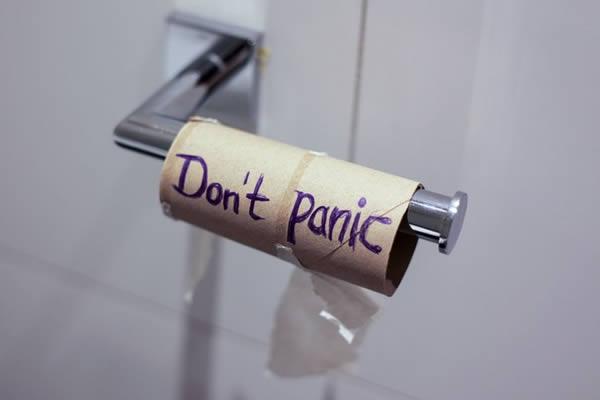
More About Urinary Incontinence and Physical Therapy
Urinary Incontinence Under the Radar: Part 2
Welcome back for Part 2! November is Bladder Health Awareness month, and Femina PT would like to shine light on something that tends to go understated, unaddressed, brushed off as “normal”: urinary incontinence. In this blog series we’ve been addressing the various effects that urinary incontinence has on an individual’s life, and how conservative physical therapy treatment can help combat them. If you missed last week’s article, you can find it here.
Last week, we went over a lot of statistics. Urinary incontinence is without a doubt a healthcare crisis and places an enormous burden on the individual and their family members. Urinary incontinence, and the related sequelae, is expensive, isolating, and poses the risk of delirium, falls, pressure ulcers, and abuse.
The secondary effects that urinary incontinence has on an individual are significant and multifactorial. This includes the psychological burden as well as the physical symptoms.
Mental wellbeing:
There are different types of urinary incontinence: stress/activity-related, urge, mixed, functional and others. No matter how it goes down, it leads to psychological consequences including but not limited to: shame, insecurity, loss of social life, isolation, and depression. To make matters worse, the added stress can worsen urinary incontinence and contribute to the vicious cycle of declining mental health. One study found that having moderate to severe anxiety and depression increases the prevalence of urinary incontinence (2).
Physical well-being:
Urge and stress urinary incontinence are positively related to falls. There is a positive correlation between a low scoring “timed up and go test” (a test that physical therapists use to assess fall risk) and symptoms of urinary incontinence in women, with the average age of 84.3 years. Other studies found a two-fold increase in risk of falls with urinary incontinence. Urinary incontinence and frequent urination at night (called nocturia) can contribute to abnormal daytime sleepiness and increased risk for falls. Additionally, urinary symptoms increase rushing to the bathroom, which negatively affects balance and spatial awareness of obstacles on the floor — further increasing fall risk.
The social isolation many resort to due to the shame surrounding these symptoms may lead to cardiovascular decline, possibly worsening the comorbidities that typically present in addition to urinary incontinence. This may lead the provider to overlook the urinary incontinence. Comorbidities are prioritized and urinary incontinence continues to worsen, further increasing risk for falls, morbidity, and the cycle continues.
How can pelvic floor physical therapy help?
Research explored the relationship between pelvic floor physical therapy (PFPT) on urinary incontinence compared to no treatment. The systematic review found that women with stress urinary incontinence who had pelvic floor muscle training versus no treatment for urinary incontinence were 8x more likely to report being cured. For women with any type of urinary incontinence, they were 5x more likely. Researchers also looked at quality of life measurements, and found that women with any type of urinary incontinence who received pelvic floor muscle training (PFMT) were more likely to report improvement in urinary symptoms, and improvement in quality of life. Women in the treatment group also reported better sexual outcomes. Researchers suggested that pelvic floor muscle training should be considered in first-line conservative management for women with urinary incontinence.
In physical therapy, you regain control of your life, learn about your own anatomy and how to manage your own symptoms so that you don’t need to continue to rely on your provider – you are given tools to help yourself.
Does conservative treatment last?
Yes! A study found that pelvic floor muscle rehabilitation for urinary incontinence remains effective for up to 5 years after an average of just 8 sessions in older women.
We hope you tell all your friends and family to think about the current and future health of your bladder this month of November. If you or anyone you know is experiencing similar bladder symptoms, see a medical provider and ask if physical therapy is a safe option for you. We recommend that if you are having urinary incontinence, see a pelvic floor physical therapist (@RITA PLEASE LINK TO CONTACT US PAGE ON FEMINA) so you can receive a thorough evaluation and receive a tailored program specific to your individual clinical presentation.
References
Debus G, Kästner R. Psychosomatic Aspects of Urinary Incontinence in Women. Geburtshilfe Frauenheilkd. 2015 Feb;75(2):165-169. doi: 10.1055/s-0034-1396257. PMID: 25797959; PMCID: PMC4361165.
Felde, G., Engeland, A. & Hunskaar, S. Urinary incontinence associated with anxiety and depression: the impact of psychotropic drugs in a cross-sectional study from the Norwegian HUNT study. BMC Psychiatry 20, 521 (2020). https://doi.org/10.1186/s12888-020-02922-4
Eliasson K, Elfving B, Nordgren B, Mattsson E. Urinary incontinence in women with low back pain. Man Ther. 2008 Jun;13(3):206-12. doi: 10.1016/j.math.2006.12.006. Epub 2007 Mar 23. PMID: 17363318.
Dumoulin C, Cacciari LP, Hay‐Smith EJC. Pelvic floor muscle training versus no treatment, or inactive control treatments, for urinary incontinence in women. Cochrane Database of Systematic Reviews 2018, Issue 10. Art. No.: CD005654. DOI: 10.1002/14651858.CD005654.pub4. Accessed 27 October 2022.
Simard C, Tu LM. Long-term efficacy of pelvic floor muscle rehabilitation for older women with urinary incontinence. J Obstet Gynaecol Can. 2010 Dec;32(12):1163-1166. doi: 10.1016/S1701-2163(16)34740-5. PMID: 21176328..
Lane GI, Hagan K, Erekson E, Minassian VA, Grodstein F, Bynum J. Patient-Provider Discussions About Urinary Incontinence Among Older Women.
Wilson, Leslie PhD; Brown, Jeanette S. MD; Shin, Grace P. PharmD; Luc, Kim-Oanh PharmD; Subak, Leslee L. MD. Annual Direct Cost of Urinary Incontinence. Obstetrics & Gynecology: September 2001 – Volume 98 – Issue 3 – p 398-406J Gerontol A Biol Sci Med Sci. 2021 Feb 25;76(3):463-469. doi: 10.1093/gerona/glaa107. PMID: 32353111; PMCID: PMC7907491.
Viktrup, Lars, et al. “Stress urinary incontinence in active elderly women.” Southern Medical Journal, vol. 98, no. 1, Jan. 2005, pp. 79+. Gale Academic OneFile
These problems are devastating, and so are the secondary effects of urinary incontinence.
If you can’t wait to meet us in the meantime, just reach out and we’d love to get you scheduled with one of our doctors.
